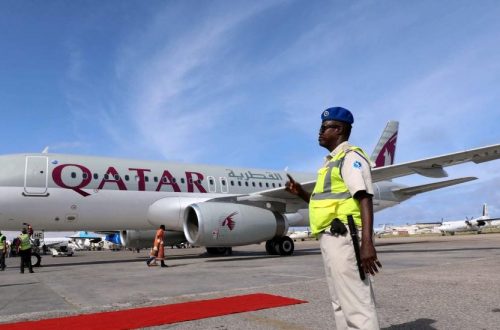It’s not an easy time for Ami Tesler, the number two in the Headquarters for Economic and Community Development of the Negev Bedouin. “The Right say we are giving the Bedouin too much and the left say we’re hurting them” he says as we sit in his Be’ersheva office.
The 30 year veteran of the Shin Bet has nevertheless taken to his role with gusto. “I know the Bedouin, I served alongside them in the army and I want to help them now.” He told me while showing me the map of the Northern Negev Desert and explaining to me the logistics involved in finding an equitable solution to a problem that has been going on since long before anyone had ever heard the name Prawer.
Helping the Bedouin leave their current shanties behind and move forward into the 21st century is a necessity. For anyone who wants to see a rail link with Eilat, an extension of Route 6 and the availability of affordable housing the freeing up of that land is a national imperative. The army are also planning a large scale move into the Negev which can’t be completed until the Bedouin land problem has been solved.
The Bedouin are a populace that is currently completely off the radar, without access to electricity, health services or any of the facets of life that most of us take for granted. The government is trying to create a world where the Bedouin live in villages with central planning, a central business district, roads and an industrial centre as well as schools and employment opportunities, all the above necessities that are currently lacking. This despite the fact that the government is spending 90 million NIS every year on school transport alone for Bedouin children to get them from the decentralised locations where they live to get them an education.
That figure might have seemed unbelievable to you so I’m going to say it again. 90 MILLION NIS EVERY YEAR JUST ON TRANSPORTING KIDS TO SCHOOL. Currently there are 205,000 Bedouin in the Negev are spread over an area of 550,000 dunams. To put this in perspective the 200,000 residents of Be’ersheva take up 45,000 dunams. There is no town planning, no infrastructure and little logistical support to the Bedouin who are sprawled out in small groups all over the desert.
What became painfully clear to me while we were sitting there talking is that the ‘plan’ everyone keeps referring to doesn’t yet exist. In the media we keep hearing about the Prawer – Begin ‘plan’. Well this plan is only a target. That by 2035 the Bedouin will be housed in new or existing townships. There is also a formula for compensation but as yet there is nothing that says which Bedouin will have to move and which will be housed in the areas within which they already reside. According to Tesler surveyors are currently going into the field to find the areas where it makes most sense to build the towns. He hopes 80% will be able to remain where they are.
We sat in his office for over 90 minutes while he gave me the lowdown on the past, present and proposed future of the Bedouin in the Negev. First off the bat it’s imperative to understand that a “village” in this sense isn’t a village as I (a Londoner) would understand one to be. Use the word village and one gets the impression of houses lined up side by side, a post office nearby, picket fencing and a car outside. This is so far from the case with the Bedouin that the word “village” is a misnomer. Try thinking dwellings, some of them tents, others shacks and the occasional concrete house. There are no roads, no fences, no provision for sewage removal or anything that a Westerner might take for granted as a part of a village. The main part of Tesler’s job is to figure out a way to provide these services to people who have spent generations living outside of just that kind of society.
Land Claims?
When I hear things like “the Bedouin are being thrown off their land” I imagine people who claim the land they are living on as their own and are (understandably) angry about being thrown off of it. This is not the case here. For all of the noise surrounding claims of “Bedouin land” only some 12,000 people, 6% of the Bedouin population are actually making a claim to land and the claims are rarely for the land they’re actually living on.
When the government first decided to tackle this issue (1971) they marked down where all the land claims were. In 1975 one Judge Albeck ruled on the land claims. Albeck ruled that since there was no documentation or other proof to the validity of the claims there was no legal basis to them. He also ruled that because the Bedouin had clearly been there for so long claimants were entitled to 20% of the claimed land and financial compensation for the rest.
Since that ruling in 1975 only 200 of the claims were resolved.
Fast forward to Prawer who created a new formula for the compensation the Bedouin are entitled to and then Begin changed it again. Under the new formula the Bedouin who are making land claims will be given financial compensation for half their land and keep the other half. Tesler said to me that there is 8 billion NIS earmarked for his agency and that some 1.2 billion was already released to them 18 months ago. Since then they have spent 400 million NIS on such things as education, vocational training and public transport for the Bedouin.
When it comes to ethnic cleansing and apartheid claims, Tesler blames NGOs and opportunistic members of Knesset. “I didn’t hear any of that kind of language until they got involved” he said “they turned a civil issue into a political one”. As far as Tesler is concerned most of the people claiming to represent the Bedouin are engaged in hyperbole in an attempt to hijack a population that has historically been loyal to the state of Israel for their own partisan politics.
We have barely scratched the surface of the Bedouin issue in the Negev. Internecine conflict in an area that has been essentially devoid of law enforcement for decades is just one obstacle to Ami and his unit. But whereas the politicians and NGOs will doubtless find a new cause celebre soon enough and the media will find the next big story, he will still be working out of Be’ersheva to ensure that the Bedouin gain the best possible future. He’ll be the one liaising with the Bedouin on a daily basis, he’ll be the one attempting to provide the Bedouin with the things that the rest of us take for granted.
The so called Prawer Begin ‘plan’ still needs 2 more readings through the Knesset before it becomes law.
- Red indicates unrecognised Bedouin settlement.
- Green indicates unpopulated areas that have Bedouin land claims on them
- Yellow indicates areas of recognised Bedouin villages and towns.




